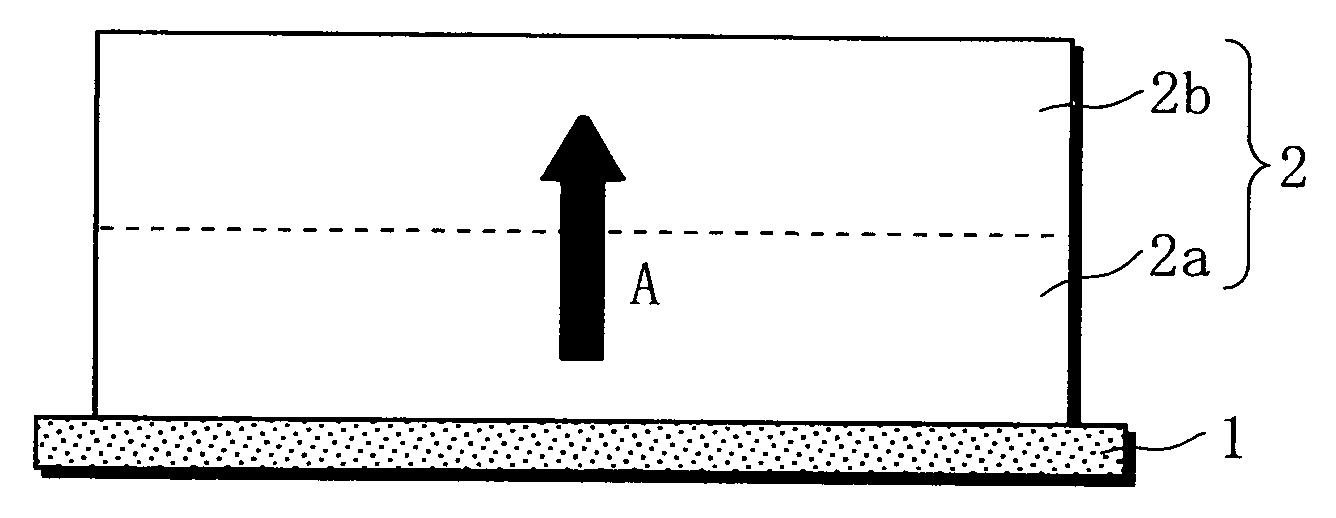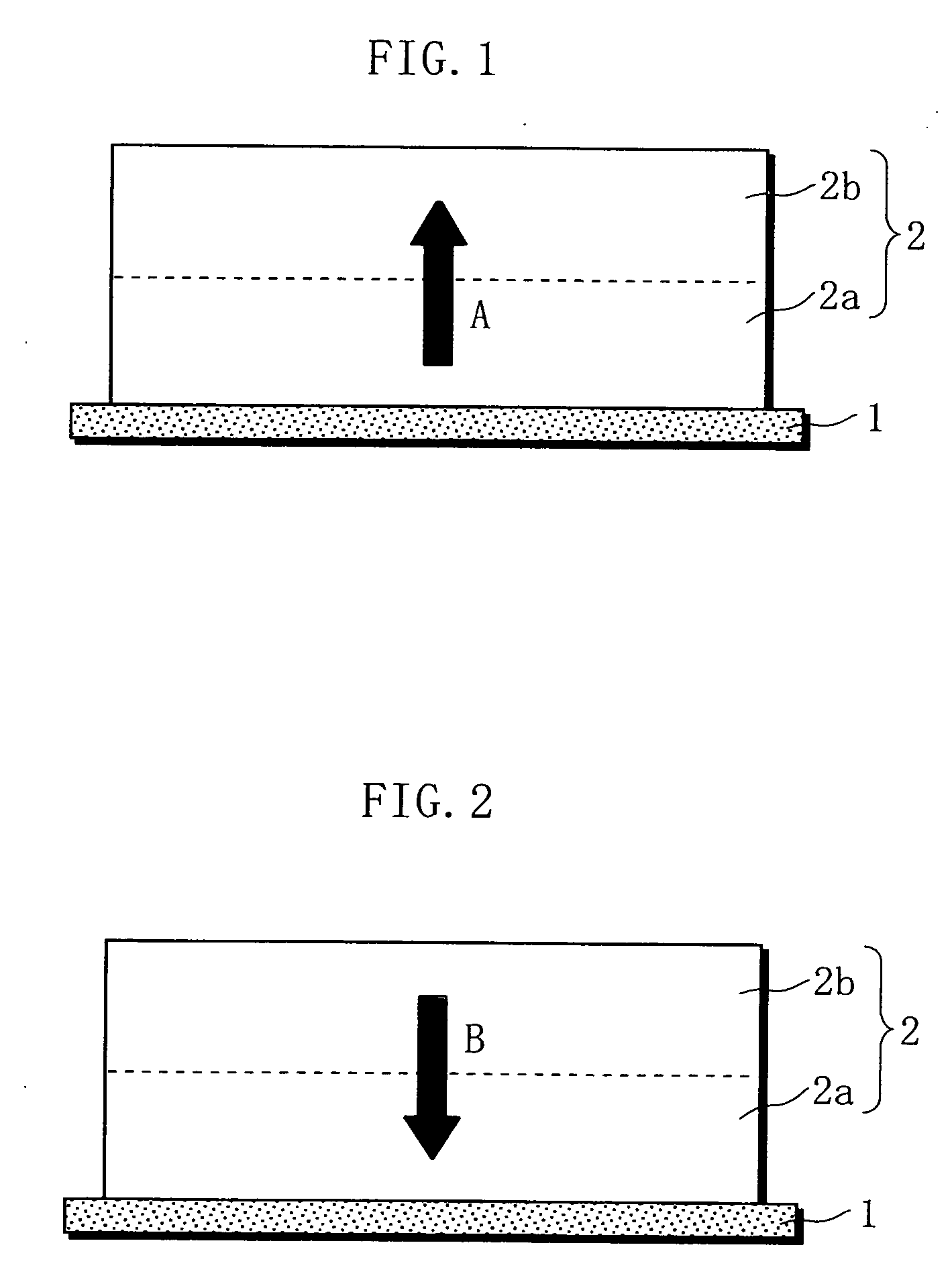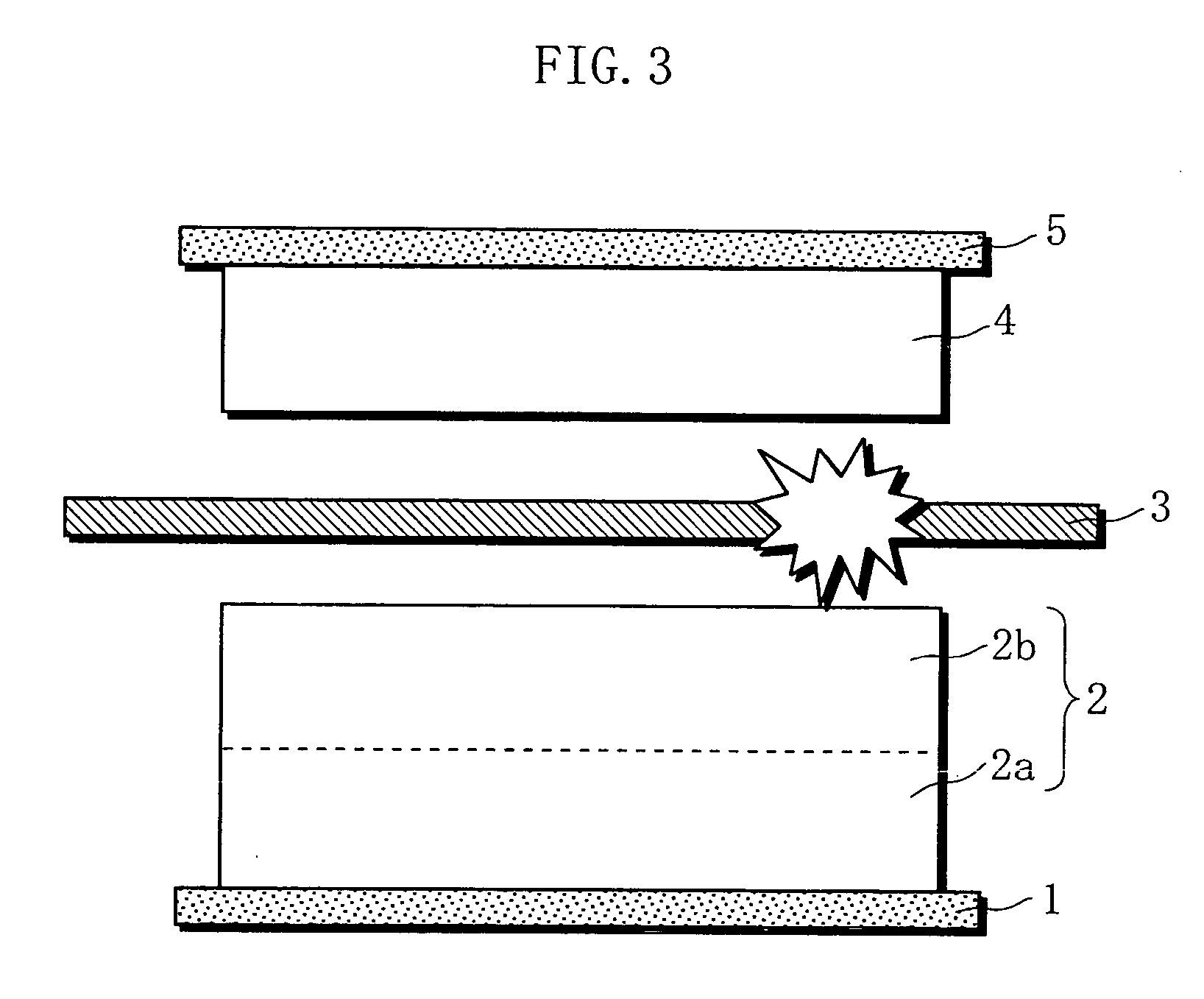Non-aqueous electrolyte battery
a non-aqueous electrolyte, battery technology, applied in the direction of non-aqueous electrolyte accumulator electrodes, active material electrodes, cell components, etc., can solve the problems of increasing the risk of electrolyte solution infiltrating the interior of the electrode, the improvement of the battery capacity has made little progress in recent months, and the battery safety to degrade, etc., to achieve the effect of improving the tolerance of the battery to overcharging, high thermal condu
- Summary
- Abstract
- Description
- Claims
- Application Information
AI Technical Summary
Benefits of technology
Problems solved by technology
Method used
Image
Examples
embodiment
[0056] Hereinbelow, the present invention is described in further detail based on preferred embodiments thereof. It should be construed, however, that the present invention is not limited to the following preferred embodiments but various changes and modifications are possible without departing from the scope of the invention.
Preparation of Positive Electrode
[0057] First, an olivine-type lithium iron phosphate LiFePO4 (hereinafter also abbreviated as “LFP”) serving as a positive electrode active material was mixed with VGCF (vapor growth carbon fiber, made by Showa Denko Kabushiki Kaisha) and acetylene black as conductivity enhancing agents at a mass ratio of 92:5:3 to prepare a positive electrode mixture powder. It should be noted that 5% of carbon as a conductive agent was added to the above-described olivine-type lithium iron phosphate compound at the time of baking. The olivine-type lithium phosphate compound is poor in electrical conductivity and shows inferior load characte...
example 1
[0065] A battery fabricated in the same manner as described in the foregoing embodiment was used as Example 1.
[0066] The battery fabricated in this manner is hereinafter referred to as Battery A1 of the invention.
example 2
[0067] A battery was fabricated in the same manner as in Example 1 above, except that the mass ratio of the positive electrode active materials LCO and LFP in the positive electrode was set to be LCO:LFP=71:29.
[0068] The battery fabricated in this manner is hereinafter referred to as Battery A2 of the invention.
PUM
| Property | Measurement | Unit |
|---|---|---|
| thickness | aaaaa | aaaaa |
| diameter | aaaaa | aaaaa |
| length | aaaaa | aaaaa |
Abstract
Description
Claims
Application Information
 Login to View More
Login to View More - R&D
- Intellectual Property
- Life Sciences
- Materials
- Tech Scout
- Unparalleled Data Quality
- Higher Quality Content
- 60% Fewer Hallucinations
Browse by: Latest US Patents, China's latest patents, Technical Efficacy Thesaurus, Application Domain, Technology Topic, Popular Technical Reports.
© 2025 PatSnap. All rights reserved.Legal|Privacy policy|Modern Slavery Act Transparency Statement|Sitemap|About US| Contact US: help@patsnap.com



